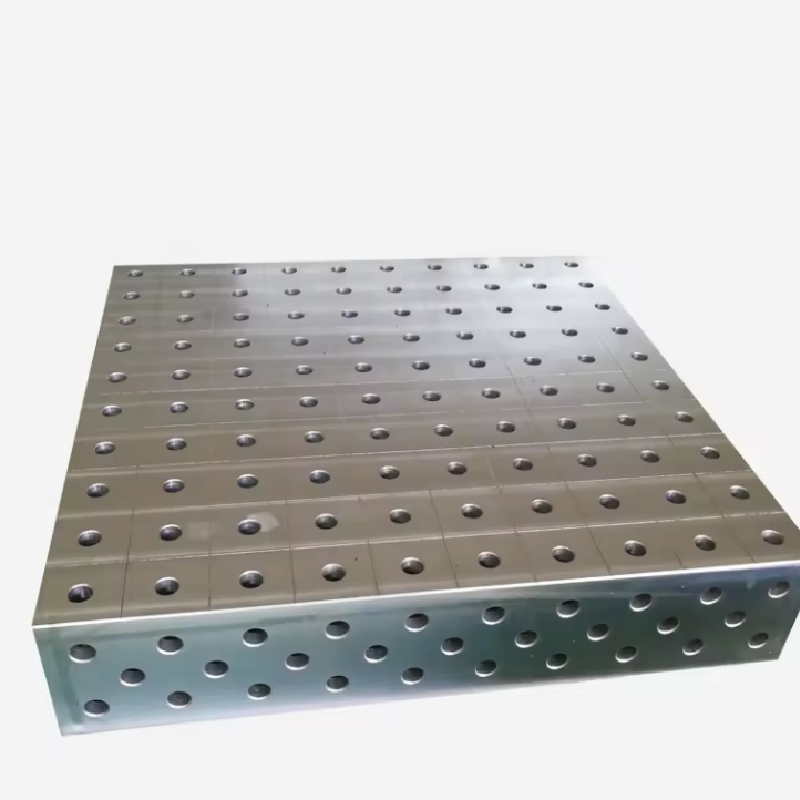Dec . 26, 2024 17:37 Back to list
Durable Welding Workbench for Efficient Metal Fabrication and Assembly Tasks
The Essential Role of Welding Tables in Metal Fabrication
Welding is a crucial process in metal fabrication that involves joining metals together by applying heat, pressure, or both. A well-designed welding table or workbench plays a vital role in ensuring the success of this process. In this article, we will explore the importance, features, types, and maintenance of welding tables, emphasizing the indispensable role they play in metalworking.
Importance of Welding Tables
Welding tables provide a stable and secure surface that can withstand the heat and forces involved in the welding process. A sturdy welding bench enables welders to position materials accurately and maintain control over their work, which is essential for achieving strong, clean welds. Moreover, welding tables often come with features that enhance safety and efficiency, making them integral to any welding operation.
One of the most significant advantages of using a welding table is the ability to create a clean and organized working environment. A dedicated workspace for welding helps keep tools and materials organized, reducing the risk of accidents and improving productivity. Additionally, welding tables can help reduce fatigue for welders, as they can work at a comfortable height and avoid unnecessary bending or reaching during the process.
Features of a Welding Table
When selecting a welding table, there are several key features to consider
1. Material Most welding tables are made from steel or stainless steel, which can withstand high temperatures and resist warping. Some tables may also have a powder-coated finish for added durability and corrosion resistance.
2. Surface Area A larger surface area allows welders to work on bigger projects, offering ample space for tools, materials, and fixtures. However, the size should be balanced with the available workspace.
3. Adjustment Features Many modern welding tables are adjustable in height, allowing for customized ergonomics. Some tables even feature tiltable surfaces for easier access during welding.
4. Clamping Systems Clamping systems are crucial for holding materials in place during the welding process. Good welding tables come equipped with built-in clamps, tabs, or slots for securing workpieces.
5. Mobility For versatility, some welding benches are equipped with wheels, making it easy to move them around the workshop as needed.
Types of Welding Tables
welding table workbench

Welding tables come in various types to suit different needs
1. Fixed Welding Tables These tables are permanently installed in a workshop and provide a stable surface for welding tasks. They are often larger and more robust, designed to handle heavy materials.
2. Portable Welding Tables Lightweight and foldable, portable tables are ideal for welders who need to work in different locations. They are convenient for on-site jobs and easy to transport.
3. Adjustable Welding Tables These tables allow users to modify the height or angle of the surface for added comfort. This is particularly helpful for lengthy projects that require extended periods of standing or bending.
4. Specialized Welding Tables Some tables are designed for specific types of welding, such as TIG or MIG welding. They may include built-in features tailored to those processes.
Maintenance of Welding Tables
Proper maintenance of welding tables ensures their longevity and optimal performance. Here are some tips for keeping your welding table in excellent condition
1. Regular Cleaning Remove any debris, slag, or spatter from the table surface after each use. This prevents contamination and ensures a smooth working area.
2. Check for Damage Periodically inspect the table for any signs of wear or damage, such as warping or rust. Address any issues immediately to avoid compromising safety or performance.
3. Lubricate Moving Parts If your welding table has adjustable components or wheels, keep them lubricated to ensure smooth operation.
4. Store Properly When not in use, cover the welding table to prevent dust accumulation and protect it from moisture.
Conclusion
In conclusion, a welding table is an essential piece of equipment in any metal fabrication shop. It provides a stable surface for welding operations while promoting safety and efficiency. By selecting the right table and maintaining it properly, welders can enhance their productivity and ensure the quality of their work. Whether you're a hobbyist or a professional, investing in a quality welding table is crucial for achieving the best results in your welding projects. With the right tools and setup, the possibilities in metalworking are truly endless.
-
Why Metric Trapezoidal Thread is Ideal for Precision Motion ControlNewsAug.05,2025
-
The Unique Properties of a Block of Granite for Industrial UseNewsAug.05,2025
-
The Role of Flanged Y Strainers in Preventing Pipeline ClogsNewsAug.05,2025
-
The Importance of Regular Calibration for Master Ring GagesNewsAug.05,2025
-
How a Cast Iron Surface Table Enhances Accuracy in ManufacturingNewsAug.05,2025
-
Comparing Different Check Valve Types for Optimal Flow ControlNewsAug.05,2025
Related PRODUCTS









